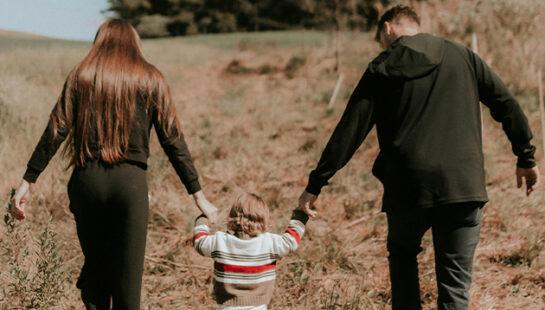Since 2021, the number of displaced people in Myanmar has risen from 380,000 to 1.9 million. That’s a five-fold increase in just three years—and it doesn’t count the thousands who have fled the country to seek refuge elsewhere.
Families are living in makeshift homes and IDP (internally displaced persons) camps scattered throughout the country. Finding enough food to feed everyone is a constant battle. So is surviving the weather, with cramped living conditions increasing the risk of disease during monsoon season. In worst case scenarios, entire camps and villages have been destroyed by heavy storms and flooding, leaving already vulnerable families with the momentous task of rebuilding their shelters.
When UN Humanitarian Chief, Martin Griffiths, visited the country in August this year, he reported that ‘successive crises in Myanmar have left one third of the population in need of humanitarian aid.’
Griffiths went on to identify some of the underlying causes: disasters caused by natural hazards, economic uncertainty, the impact of COVID lockdowns, and an ongoing conflict between Myanmar’s military junta and armed resistance forces.
These intersecting issues are complex, fueled by a history of unrest and displacement in Myanmar. Here’s a quick summary of what’s happening, and the events that led up to the situation today.
The 2021 Military Coup
Myanmar’s current crisis began when the country’s military staged a coup against the government on 1 February, 2021.
The ruling party at the time—the National League for Democracy led by Aung San Suu Kyi—had been in power since 2015, after a landslide victory in Myanmar’s general election. But in 2021, the military alleged that voter fraud had taken place in the country’s 2020 election, and arrested the party’s key leaders—including Suu Kyi.
A state of emergency was declared, allowing the military to assume all government functions in the country. In the weeks that followed, peaceful demonstrations and worker strikes were met with violent opposition from the military. The situation has now escalated into armed conflict, and communities are finding themselves in harm’s way.
From Coup to Civil War
Clashes between armed resistance movements and the ruling military are now rife in Myanmar. Over the last few years, civilians in the country’s north-west and south-eastern regions have lived through frequent air strikes, landmine incidents, and heavy fighting. In April this year, for example, an aerial bombing of a village in the central Sagaing region killed over 165 people, including children. Ethnic and religious minorities have also experienced hostility—including Christians, who are just six percent of Myanmar’s population.
While it’s difficult to get exact numbers, it’s estimated that over 70,000 homes and structures in conflict-affected regions have been destroyed since the coup. Out of the 1.9 million that are currently displaced in Myanmar, the vast majority (around 1.6 million) fled their homes due to conflict. Many of these people now live in makeshift shelters, and rely on humanitarian aid to support their families. Those who left the country—around 70,000 people since the military coup—are in a similar situation. They’ve been living in temporary shelters for an indeterminate period of time, hoping that one day it will be safe to return home.
Disaster Strikes
On top of widespread conflict, communities in Myanmar are also coping with disasters, caused by natural hazards, that have wreaked havoc across the country.
On 14 May this year, Cyclone Mocha hit Rakhine state on the Western coast of Myanmar. The region became an emergency disaster area after a category-five storm destroyed buildings and tore through villages, impacting around 2.4 million people.
Then in mid-August, flooding caused by heavy monsoon rains caused 48,000 people to be evacuated from Kachin, Chin, Rakhine and Mon states, and the Magway and Bago regions.
What makes this situation even more complex is that Rakhine state—one of the areas impacted by Cyclone Mocha and flooding—is home to the Rohingya ethnic minority. The Rohingya community has faced discrimination for decades, and been denied citizenship and full access to basic rights like healthcare and employment.
Currently around 600,000 Rohingya people live in Rakhine state, with 142,000 of them in displacement settlements. When Cyclone Mocha swept through these villages and camps, it destroyed homes and shelters belonging to people who are already vulnerable. It also significantly disrupted the livelihoods of more than 80 per cent of farming households in Rakhine, further exacerbating food shortages in the region.
The Challenge of Providing Aid
One issue that impacts vulnerable families in Myanmar is limited access to life-saving humanitarian aid.
A month after Cyclone Mocha made landfall, the military junta restricted humanitarian access to Rakhine state, making it difficult to provide affected communities with items like food supplies, hygiene kits and materials for repairing shelters. The restriction was temporary, but providing aid is still challenging amidst the country’s political turmoil.
Please join us in praying for the people of Myanmar.
We pray:
- For an end to conflict and a lasting peace
- For those people displaced by violence and disaster to find safety and shelter
- For families outside of Myanmar—that God would comfort them and sustain them with hope
- For the protection of Christians, that people may continue to worship freely
- For church leaders and volunteers, who are seeking to serve their communities at great risk
We pray, Lord have mercy.



 Heather Keith,
Heather Keith,
